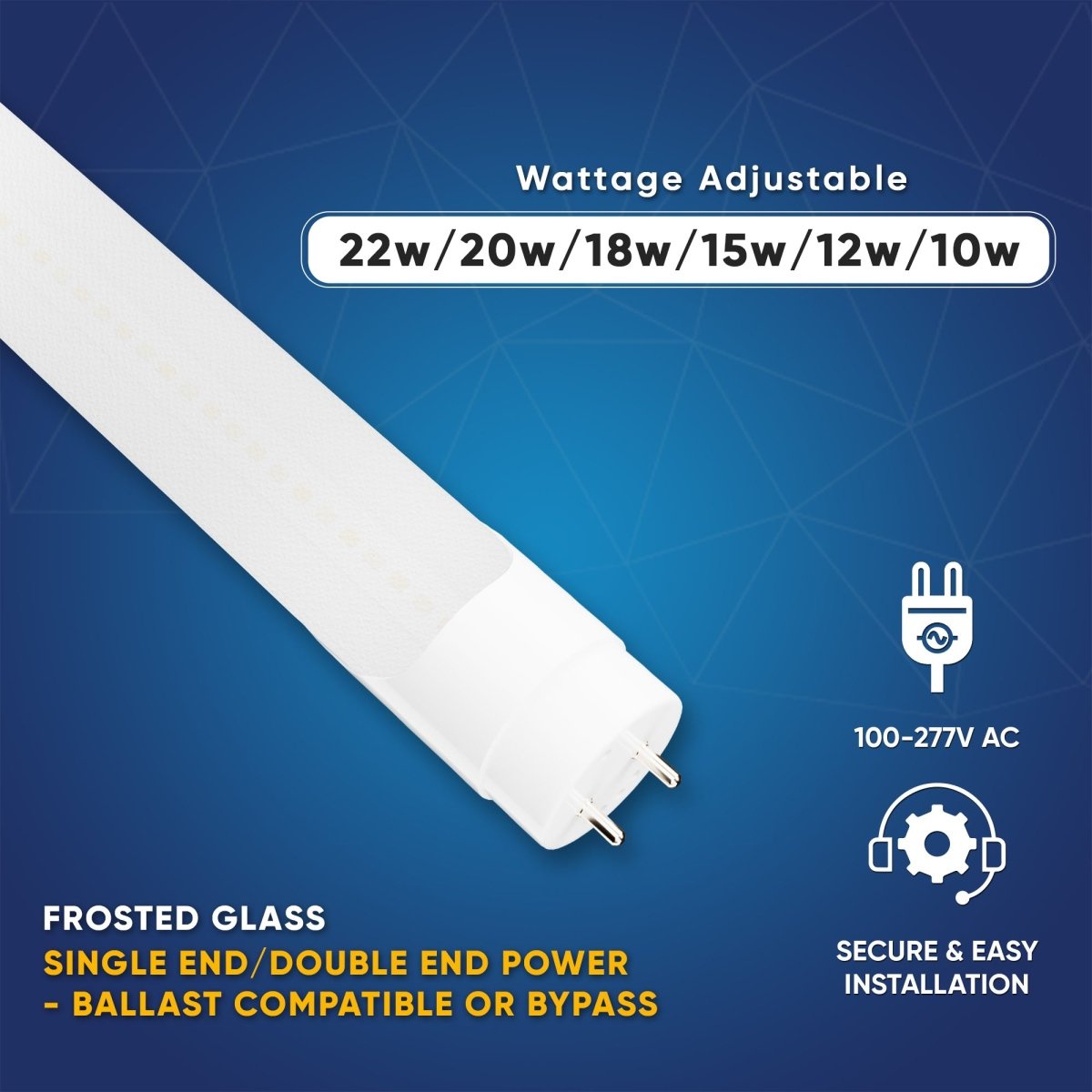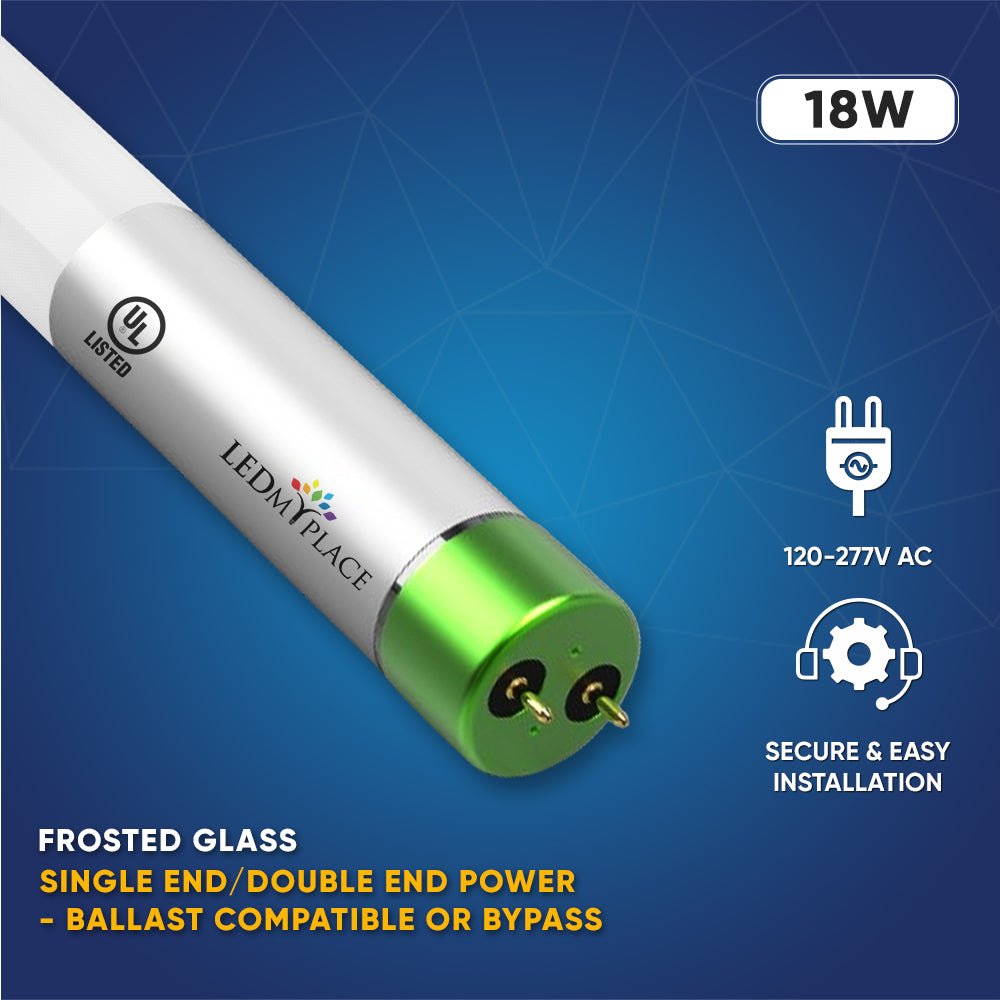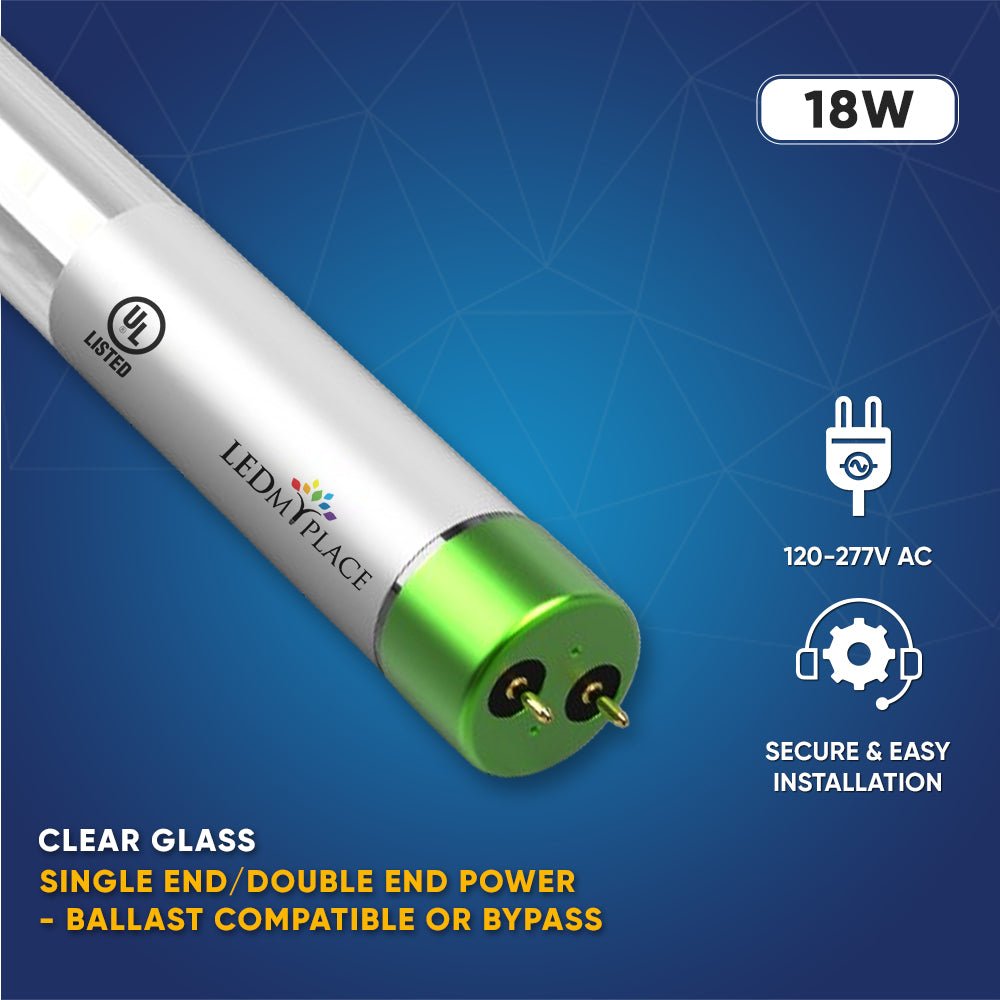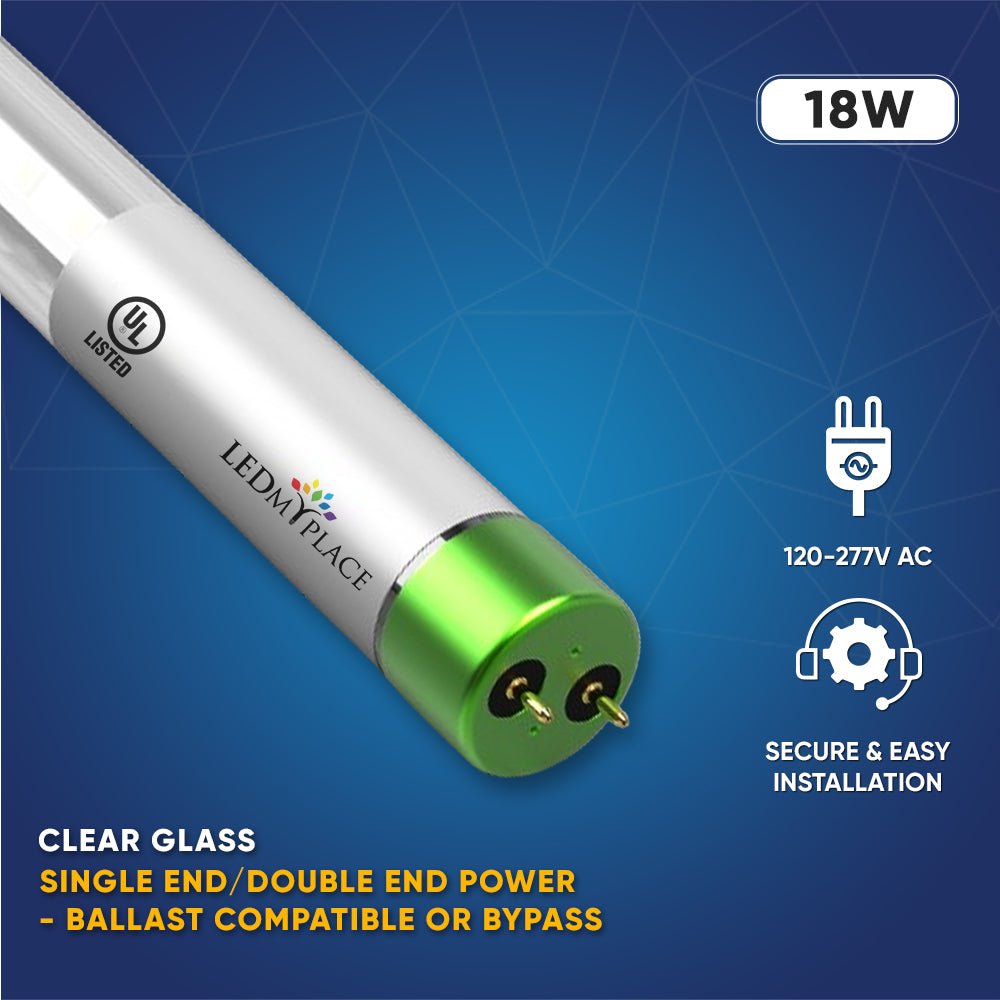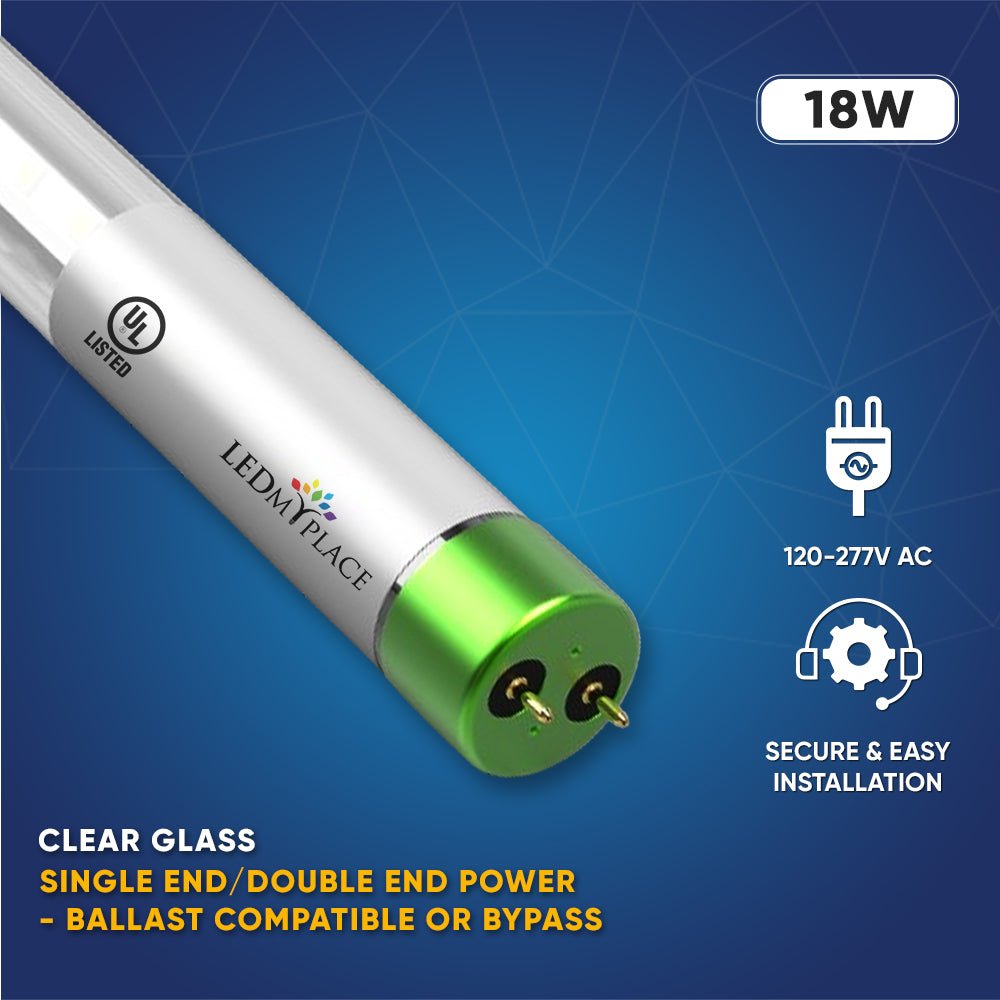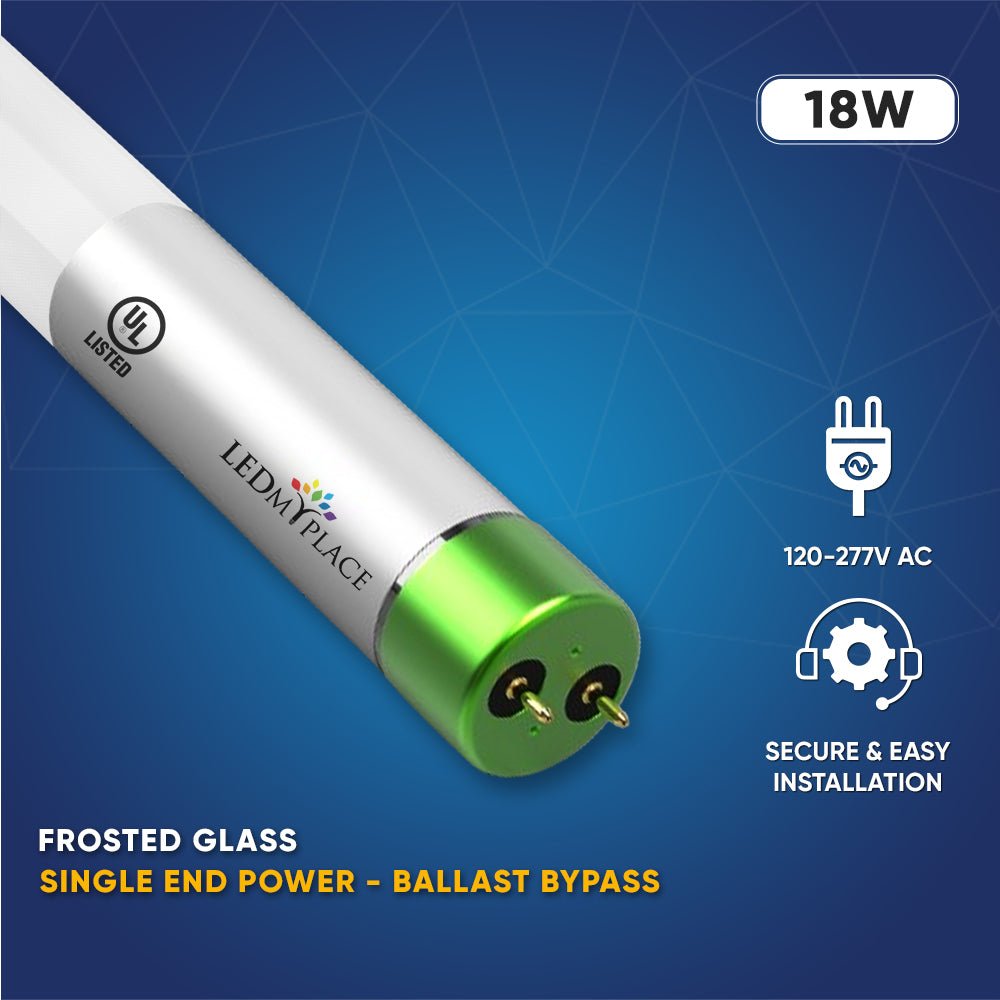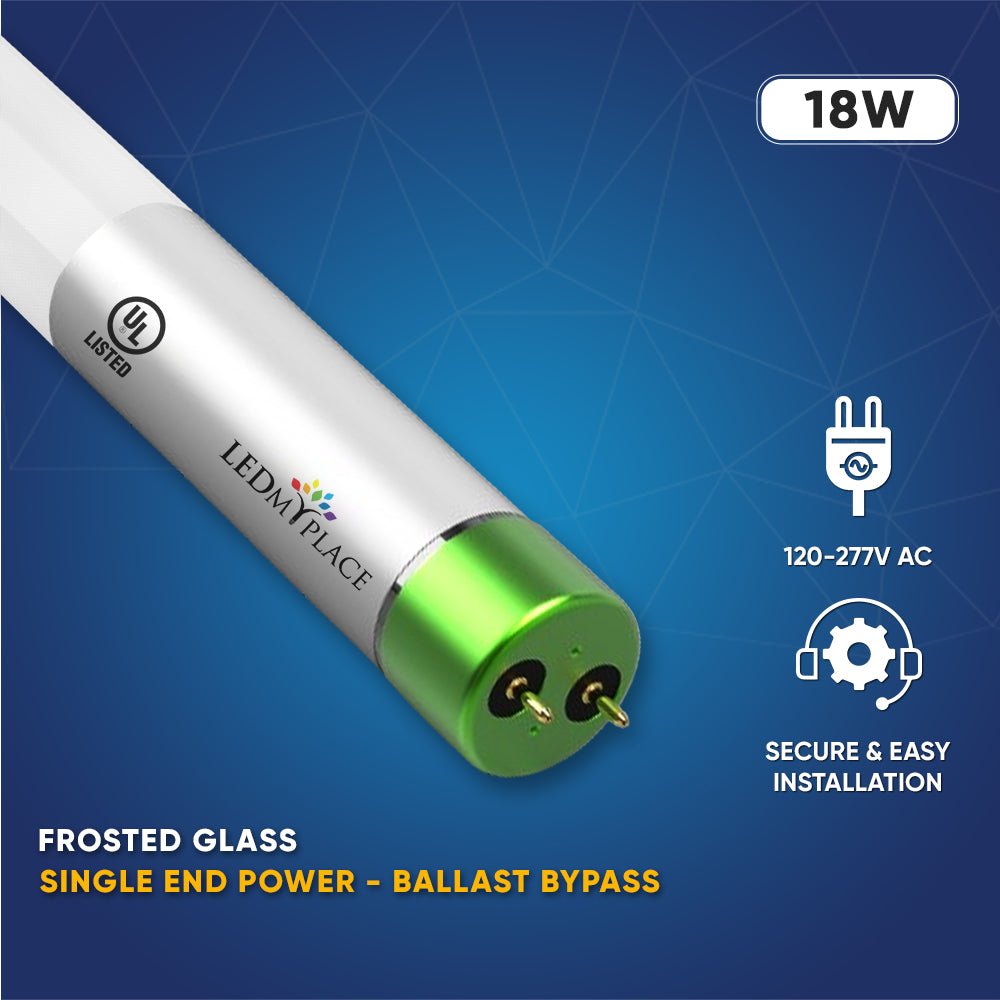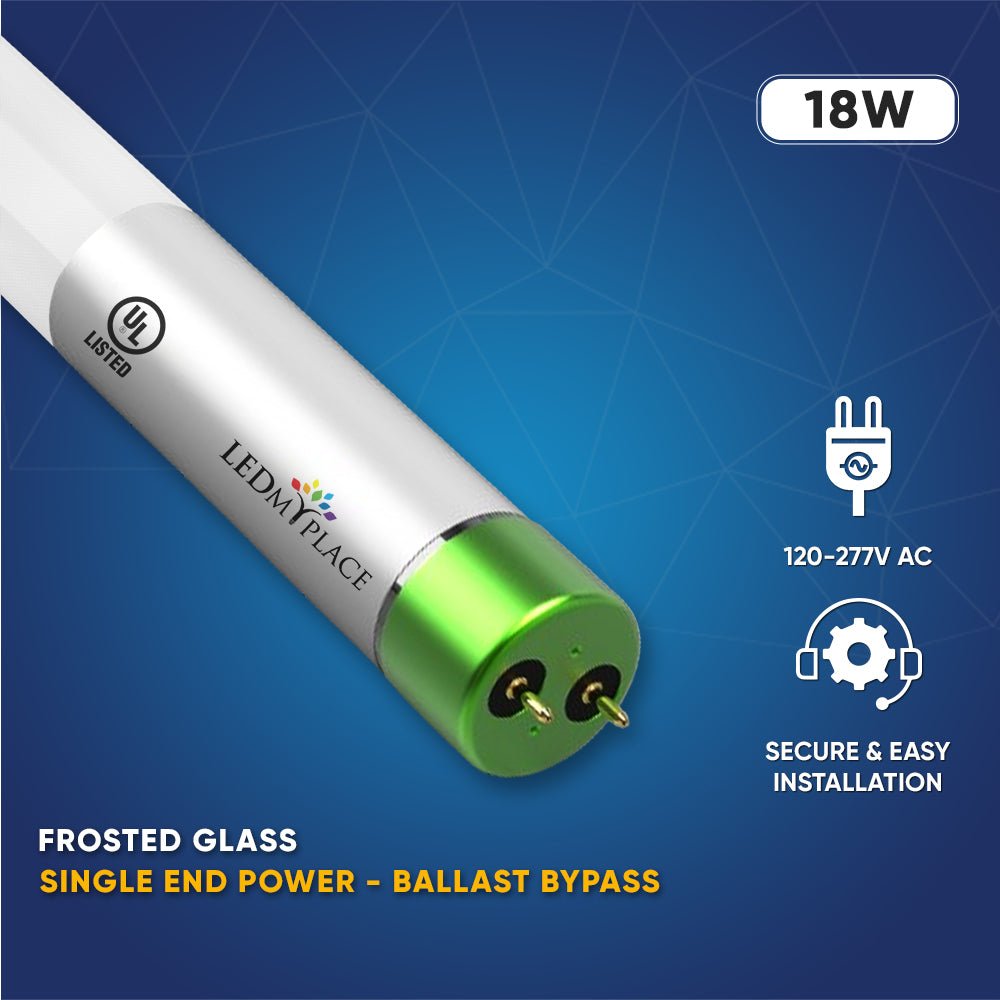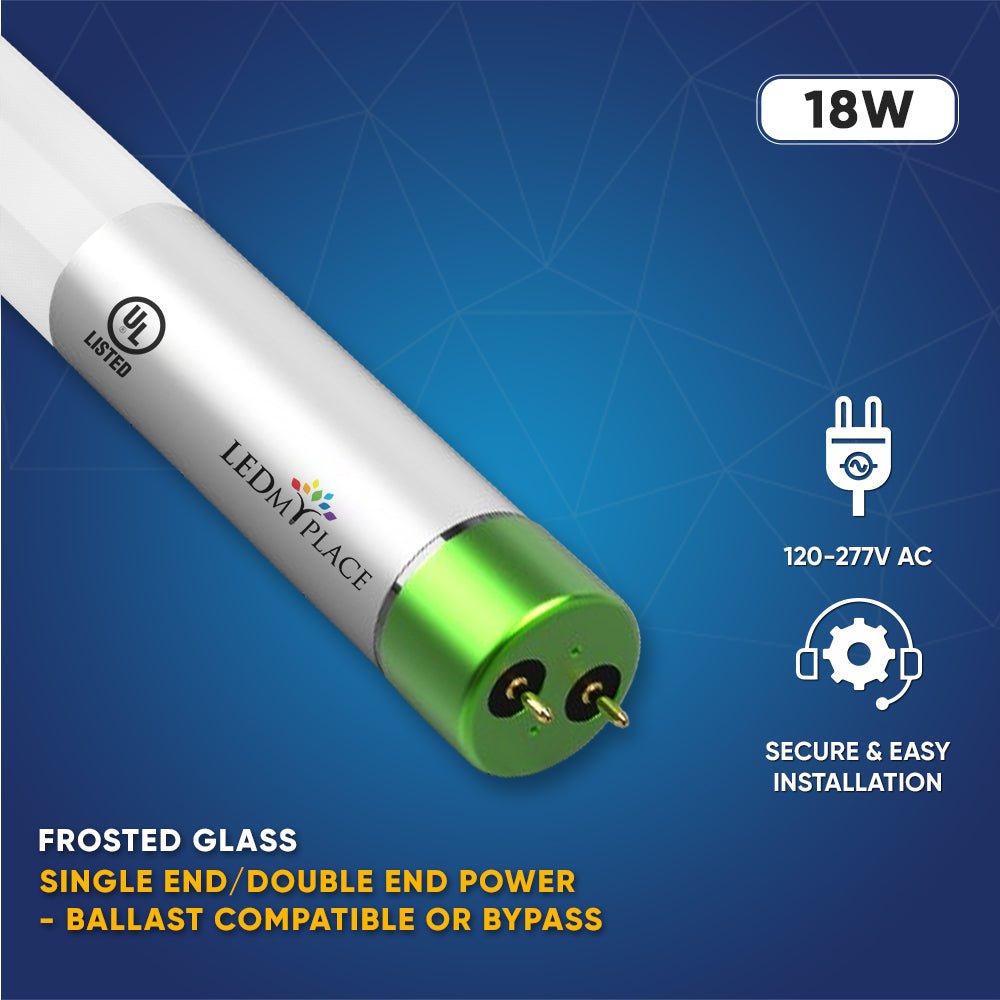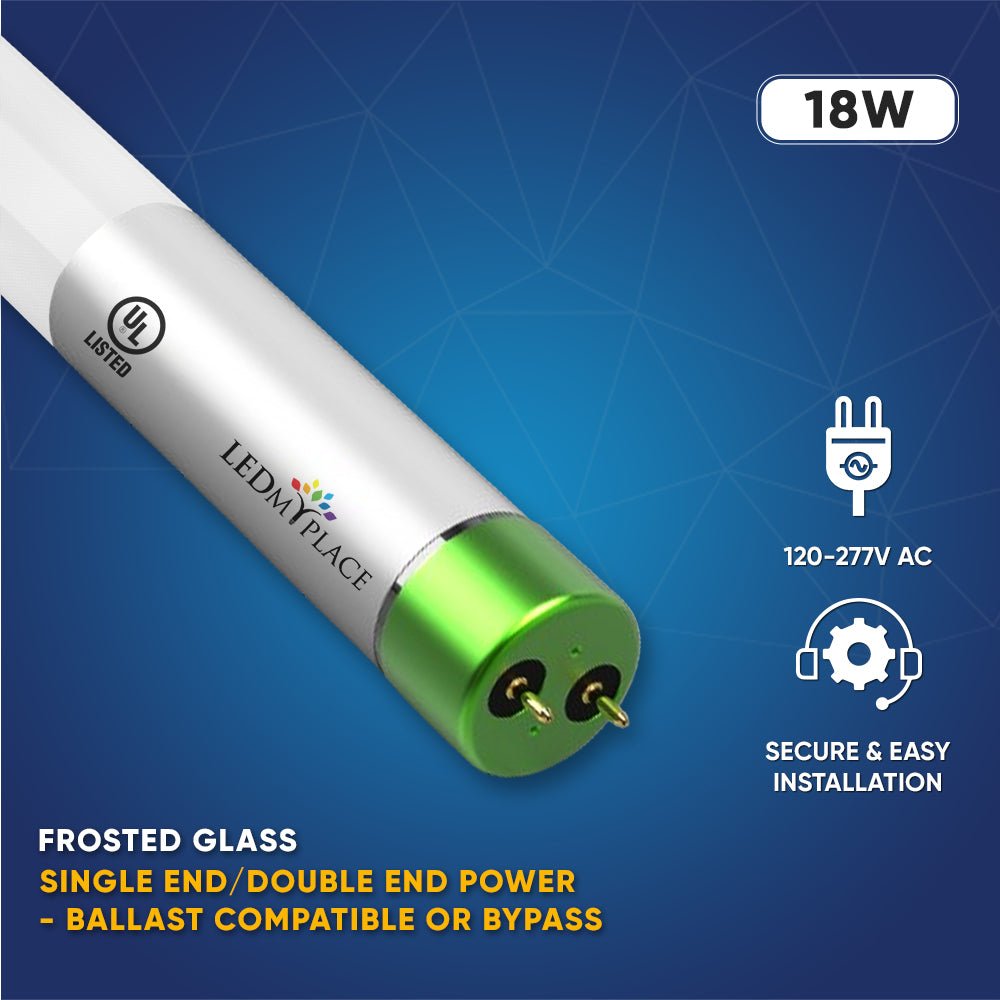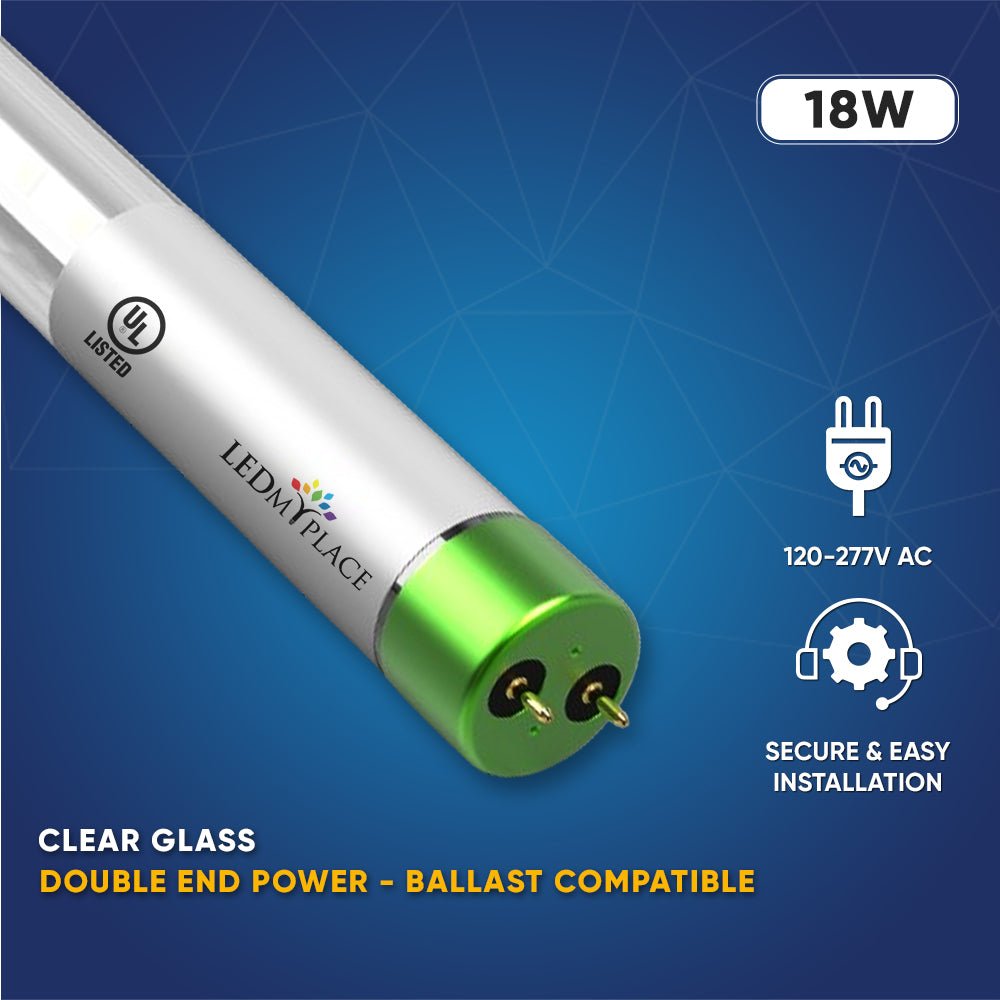LED tubes have revolutionized the lighting industry, offering numerous advantages over traditional fluorescent tubes. In this article, we'll delve into the various reasons why LED tubes are surpassing fluorescent tubes in popularity and practicality.
Table of Contents
|
Introduction
In today's environmentally conscious world, energy-efficient lighting solutions have become imperative. LED tubes, or light-emitting diode tubes, have emerged as a superior alternative to fluorescent tubes due to their energy efficiency, longevity, and environmental benefits.
Energy Efficiency
One of the most significant advantages of LED tubes over fluorescent tubes is their energy efficiency. LED tubes consume significantly less energy than fluorescent tubes, resulting in lower electricity bills and reduced carbon emissions. Unlike fluorescent tubes, which emit light by heating mercury vapor, LED tubes produce light through the movement of electrons in a semiconductor material, making them more energy-efficient.
Comparison of Energy Consumption
LED tubes typically use 40-60% less energy than fluorescent tubes to produce the same amount of light, making them an ideal choice for businesses and households looking to reduce their energy consumption and carbon footprint.
Environmental Impact
In addition to saving energy, LED tubes have a lower environmental impact compared to fluorescent tubes. LED technology does not contain hazardous materials like mercury, which is present in fluorescent tubes and poses a risk to human health and the environment if not disposed of properly.
Lifespan and Durability
LED tubes boast a longer lifespan and greater durability than fluorescent tubes, making them a cost-effective lighting solution in the long run.
Lifespan Comparison
On average, LED tubes have a lifespan of 50,000 to 100,000 hours, significantly longer than fluorescent tubes, which typically last around 10,000 to 15,000 hours. This extended lifespan translates to fewer replacements and maintenance costs for LED tube users.
Durability of LED Tubes
LED tubes are also more durable than fluorescent tubes, as they are not as prone to breakage or damage from vibrations or temperature fluctuations. This durability makes LED tubes ideal for use in various environments, including warehouses, parking garages, and outdoor lighting applications.
Cost-effectiveness
While LED tubes may have a higher initial cost than fluorescent tubes, their long-term savings and cost-effectiveness outweigh the upfront investment.
Initial Cost vs. Long-term Savings
Although LED tubes are initially more expensive than fluorescent tubes, their lower energy consumption and longer lifespan result in significant savings over time. Businesses and homeowners can recoup the initial cost of LED tubes through reduced electricity bills and fewer maintenance expenses.
Maintenance Expenses
LED tubes require less maintenance than fluorescent tubes, as they don't need frequent replacements or ballast repairs. This reduction in maintenance costs further contributes to the overall cost-effectiveness of LED lighting.
Environmental Benefits
LED tubes offer several environmental benefits compared to fluorescent tubes, contributing to sustainability efforts and reducing carbon emissions.
Reduction of Carbon Footprint
By consuming less energy and containing no hazardous materials, LED tubes help reduce carbon emissions and minimize the environmental impact of lighting systems. Switching to LED lighting is an effective way for businesses and individuals to lower their carbon footprint and support sustainable practices.
Disposal Considerations
Unlike fluorescent tubes, which contain mercury and require special disposal methods, LED tubes can be recycled and disposed of safely without posing a threat to the environment or human health. This ease of disposal adds to the environmental advantages of LED lighting.
Quality of Light
LED tubes offer superior quality of light compared to fluorescent tubes, providing better illumination and reducing eye strain and fatigue.
Comparison of Light Quality
LED tubes produce a more natural and uniform light compared to fluorescent tubes, which often exhibit flickering and inconsistent brightness. The high-quality light emitted by LED tubes enhances visibility and creates a more comfortable and productive environment for users.
Flickering Issues
Fluorescent tubes are prone to flickering, which can cause discomfort and visual disturbances for occupants. LED tubes eliminate flickering issues, providing stable and consistent illumination for extended periods without any interruptions.
Safety Features
LED tubes are safer to use than fluorescent tubes, offering enhanced safety features and reducing the risk of fire hazards and exposure to hazardous materials.
Heat Generation Comparison
LED tubes generate less heat than fluorescent tubes, reducing the risk of overheating and fire hazards in enclosed spaces. This lower heat output also contributes to energy savings by reducing the need for additional cooling systems.
Risk of Mercury Exposure
Fluorescent tubes contain mercury, a toxic substance that poses health risks if broken or improperly disposed of. LED tubes are mercury-free, eliminating the risk of mercury exposure and ensuring a safer lighting solution for both indoor and outdoor applications.
Design and Flexibility
LED tubes offer greater design flexibility and versatility than fluorescent tubes, allowing for customized lighting solutions and easy retrofitting options.
Versatility of LED Tubes
LED tubes come in various sizes, shapes, and color temperatures, allowing users to customize their lighting design according to their preferences and requirements. Whether it's task lighting in offices or ambient lighting in residential spaces, LED tubes offer versatility and adaptability for any application.
Retrofitting Options
LED tubes can be easily retrofitted into existing fluorescent fixtures, making the transition to LED lighting seamless and cost-effective. Retrofitting eliminates the need for costly fixture replacements and allows users to upgrade their lighting systems without extensive renovation work.
Conclusion
In conclusion, LED tubes offer numerous advantages over fluorescent tubes, including energy efficiency, longevity, cost-effectiveness, environmental benefits, and superior light quality. By switching to LED lighting, businesses and individuals can reduce energy consumption, lower maintenance costs, and contribute to a more sustainable future.
FAQs
-
Are LED tubes compatible with existing fluorescent fixtures?
- Yes, LED tubes can be easily retrofitted into most existing fluorescent fixtures without the need for extensive modifications.
-
Do LED tubes produce harmful UV radiation?
- No, LED tubes do not emit harmful UV radiation, making them safe for use in indoor environments.
-
Can LED tubes be dimmed?
- Yes, many LED tubes are dimmable, providing users with flexibility and control over their lighting settings.
-
Are LED tubes more expensive to purchase upfront?
- While LED tubes may have a higher initial cost than fluorescent tubes, their long-term savings and benefits outweigh the upfront investment.
-
How do LED tubes contribute to sustainability efforts?
- LED tubes consume less energy, contain no hazardous materials like mercury, and have a longer lifespan, reducing environmental impact and supporting
















































































